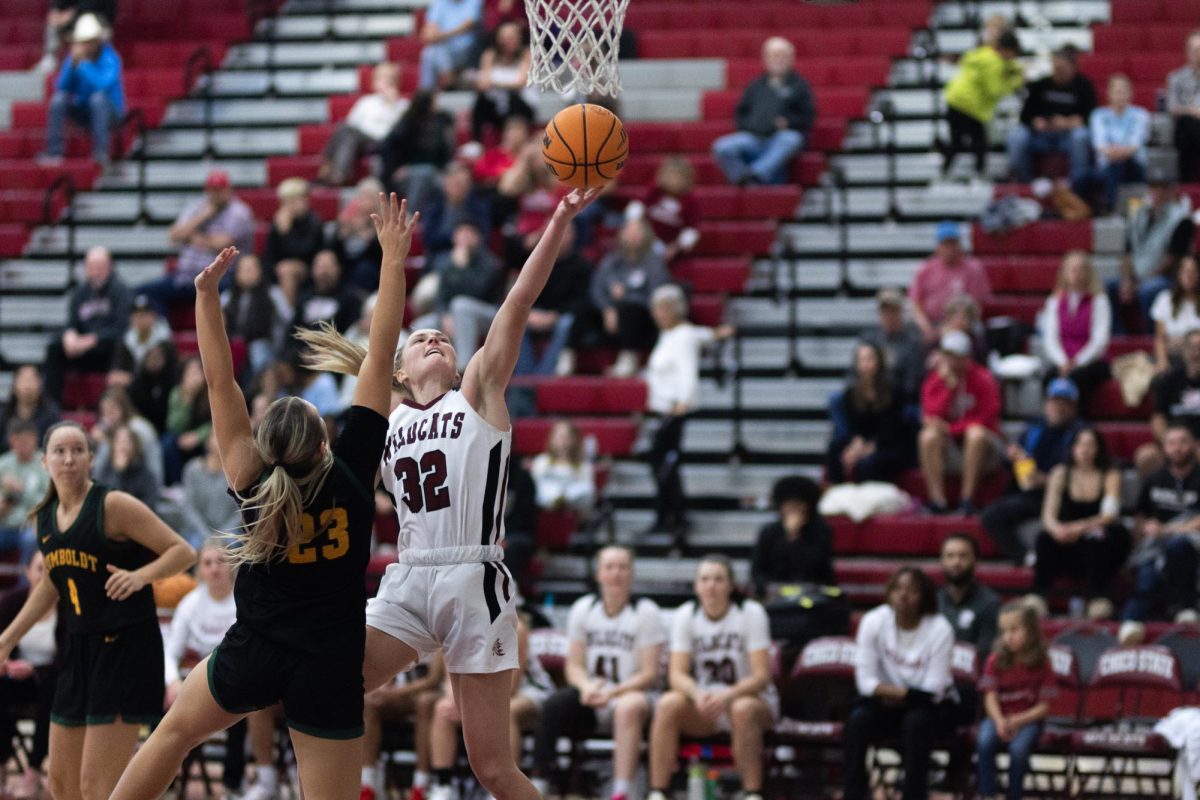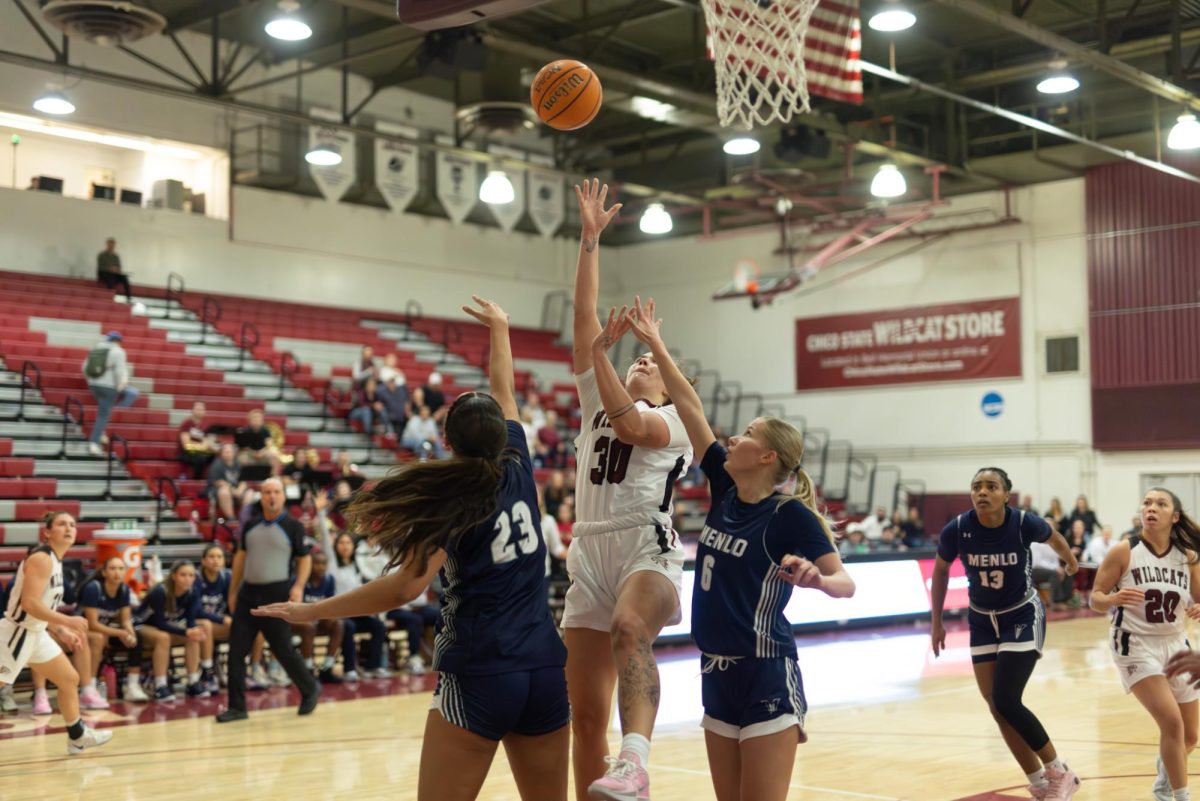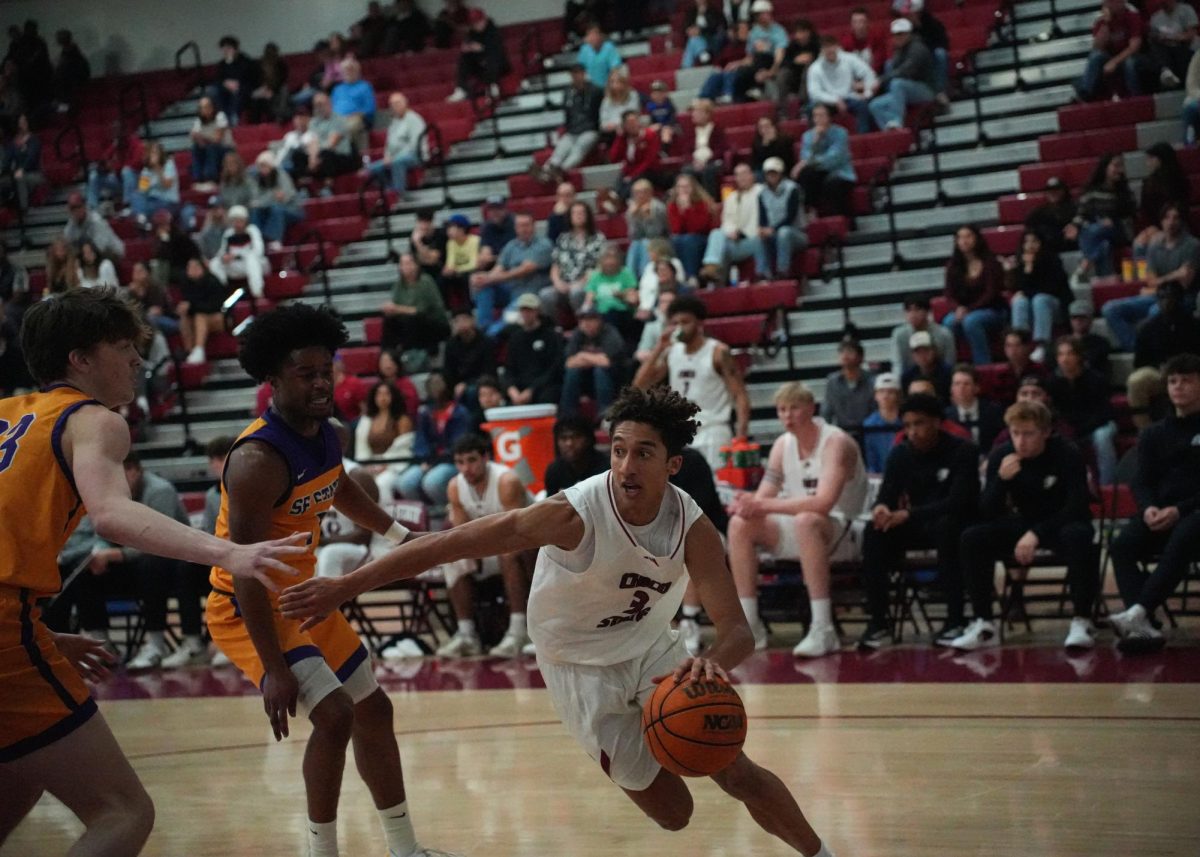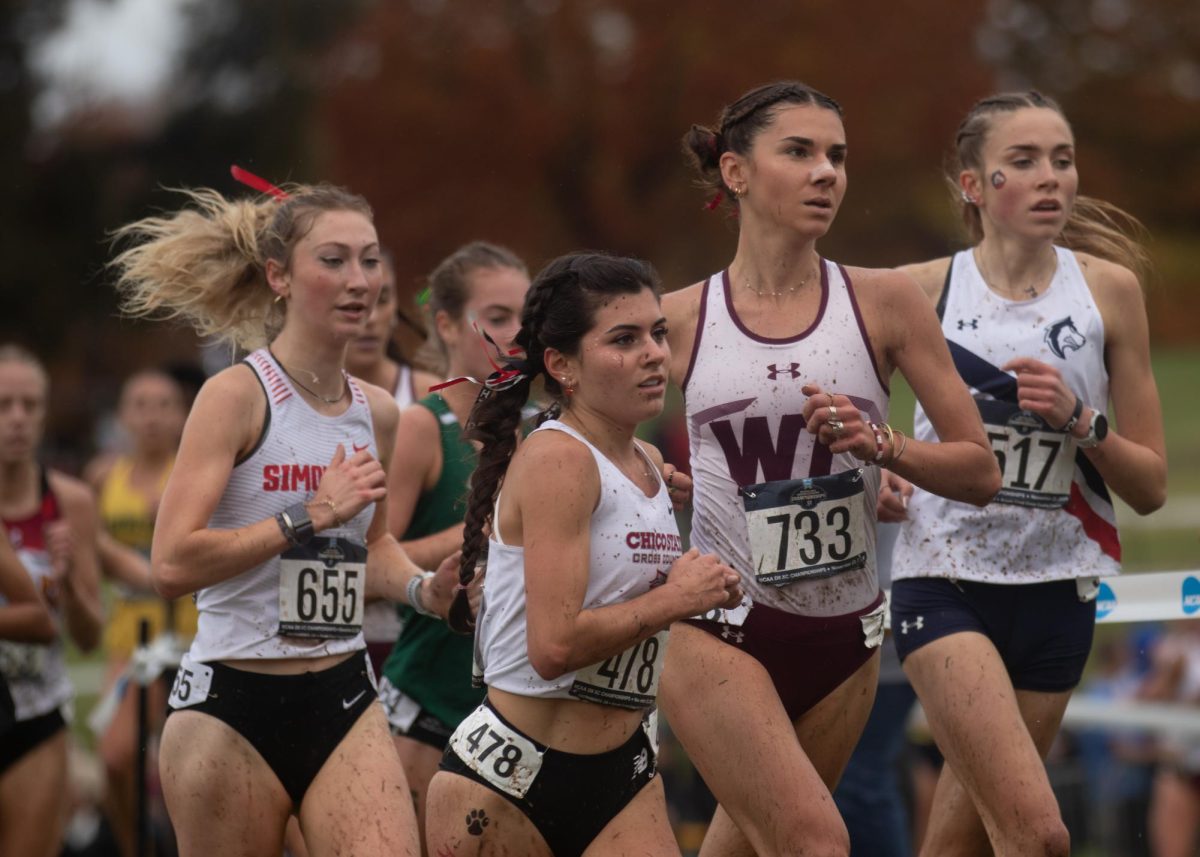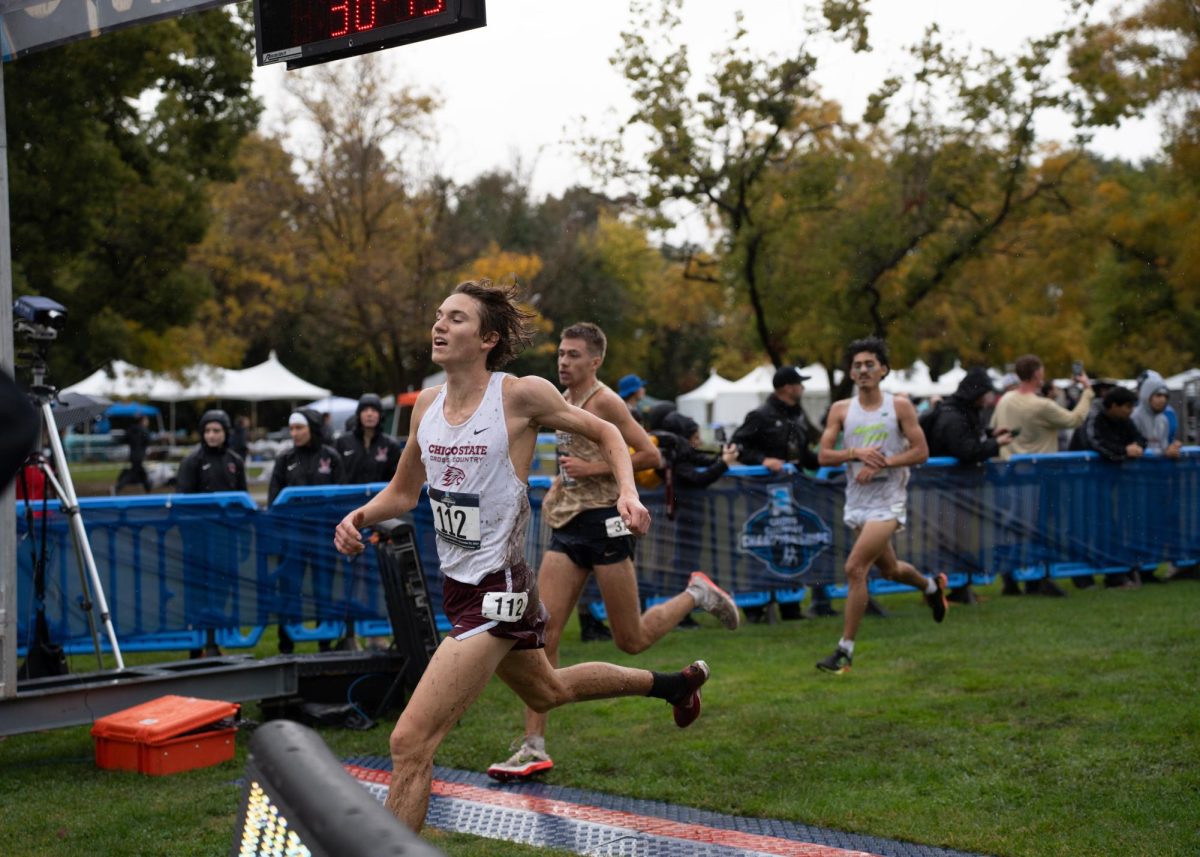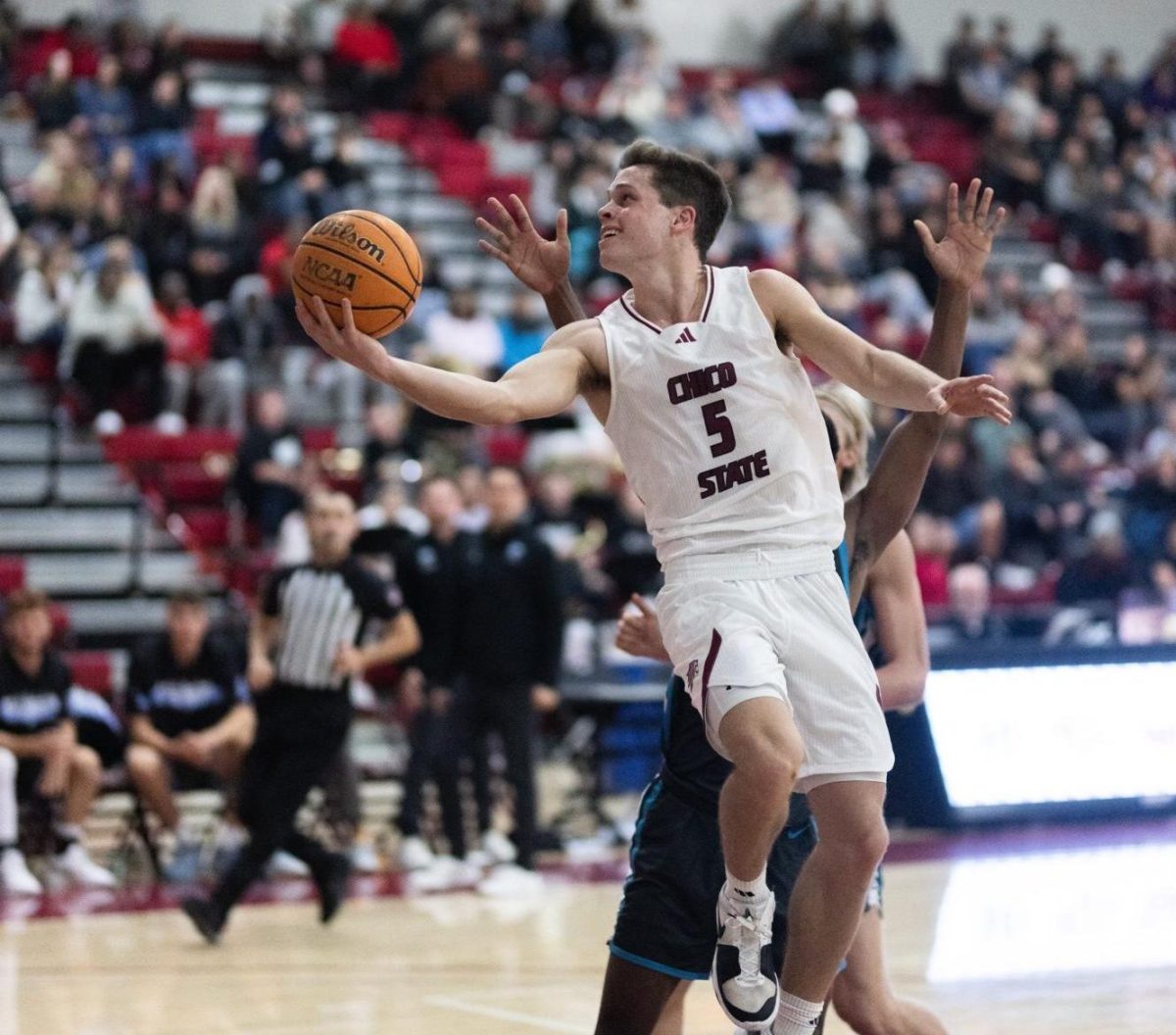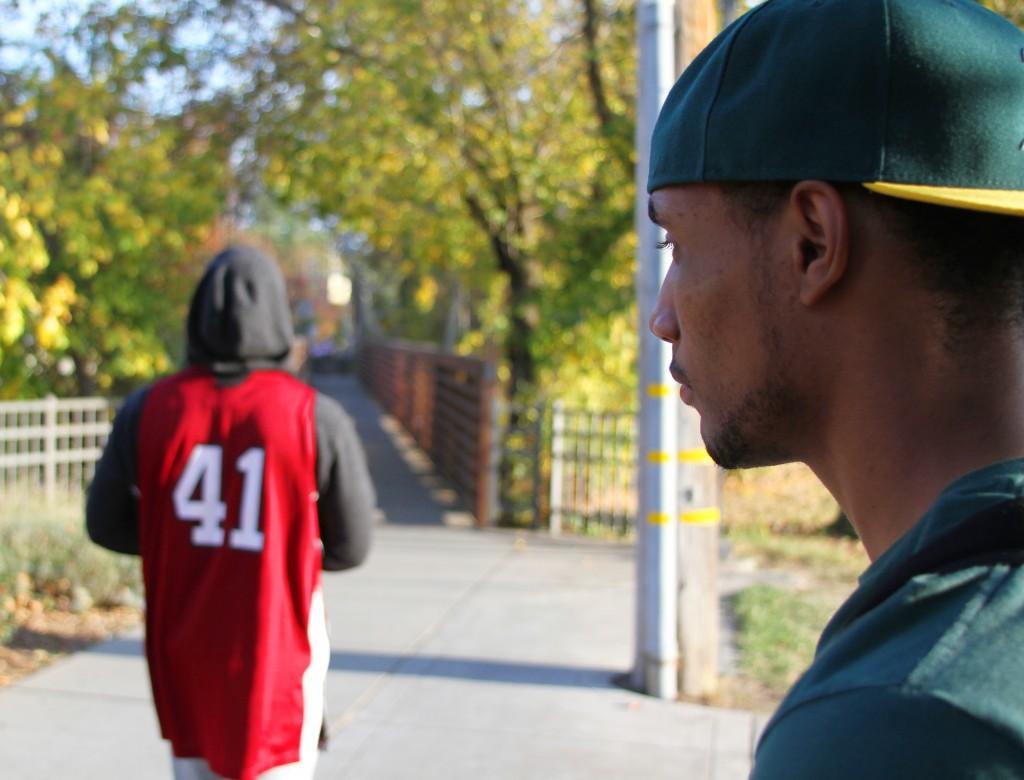
Jordan Barton (right), a junior forward for the Chico State men’s basketball team, watches a student walk by wearing his jersey.
What if people worked extremely hard and put in effort for six to eight hours a day, only to go home and not be able to buy groceries for themselves?
For many student-athletes this is a reality.
NCAA Division I teams are well-known to drive big bucks to their universities. In last year’s BCS National Championship, Notre Dame received $6.2 million to play in the game, according to an article in Forbes Magazine. That does not include the $15 million they received from NBC on a television deal to air all home games that season.
Compare that to the scholarships the Irish football players received, which were about $52,000 a year. The numbers do not add up.
Although records show there is some monatary benfit to college athletics in Division II schools, the money is nowhere near as much money as successful Division I programs rake in.
Chico State is a Division II school, and its athletic teams made a profit of about $99,000 in 2013, according to an Equity in Athletics Act report.
Men’s sports teams cost the university about $1,000 throughout 2013, according to the report. Women’s athletics, by contrast, made $22,817, according to the report.
The revenue brought in by Division I and II schools is vastly different, but the financial struggles of athletes are the same, said Jordan Barton, a forward for the men’s basketball team.
“There are a lot of student -athletes who come to school and don’t have any money,” Barton said. “A lot of athletes face the fact that they have a scholarship that sometimes only covers their books.”
Some athletes are offered scholarships that cover the cost of classes and school meal plans. But at smaller schools like Chico State, sometimes a scholarship is not enough to pay for college. Many students rely on financial aid, Barton said.
“And some don’t even qualify for that,” he said.
Most college athletes do not have the time to get a part-time job because they are busy balancing practice and games with a full-time school schedule.
If the NCAA ever decides to pay college athletes, they will need to come up with a way to pay all NCAA athletes.
A weekly stipend could work for Division I athletes, said Lee Gearhart, a sophomore on the Chico State men’s golf team.
“It is pretty much a part-time job,” Gearhart said. “ Combine practices and games, it probably does add up close to 20 hours a week.”
The cost would need to be adjusted depending on where the school is located, he said. For example, it is generally a lot cheaper to live in Chico compared to San Diego.
Some Division I athletes are more than just college sports players — they’re becoming celebrities, said Jordan Semple, a forward for the men’s basketball team. The NCAA won’t allow them to charge money for signing sports memorabilia, he said.
For smaller schools, the NCAA could consider more funding toward scholarships for athletes, Semple said. But some players might take exception to scholarships being doled out equally among the whole team.
“Most teams only have two or three players that are elite.” Semple said. “So it wouldn’t be fair to give scholarships to role players.”
The NCAA will continue to be beset by athletes and spectators asking why many players aren’t being paid enough to cover all their costs. But for now, student-athletes will keep signing footballs and jerseys without receiving any money.
Sergio Sanchez can be reached at [email protected] or @sergechez on Twitter.



